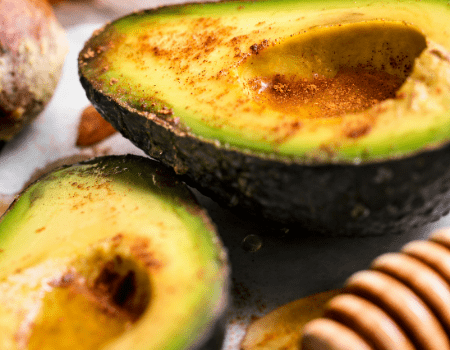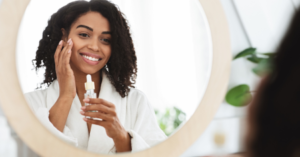Affiliate Disclosure: I may receive at no extra cost to you, a small commission for purchases made via affiliate links. If you decide to support my blog in this way, I thank you!
ADD HERBS AND SPICES TO YOUR NATURAL SKINCARE ROUTINE
Add Beauty from the Inside by Enhancing the Health of your Skin
Add Beauty from the Outside by Using Herbs and Spices for DIY Skincare
I can’t imagine cooking without herbs and spices in my cooking. A spicy soup, a salad with the addition of parsley or fresh basil can’t be beat for flavor and health. Now I’ll talk about some of the reasons to add these with the intention of creating better, more beautiful skin. You will be invigorating your health internally as well as topically, and it’s delicious and fun at the same time!
You don’t have to spend lots of money on fancy packaging and harsh chemicals to get youthful, glowing skin. Great skin can be achieved naturally with ingredients that can be found at home in your very own kitchen or garden.
Herbs and spices have been used to cure skin ailments for thousands of years and can still be useful today on their own, in your food or in skincare products if you want to get great skin naturally.
Ginger
Whenever I have an upset stomach, I reach for a nice calming cup of ginger tea. But did you know that it’s also great for your skin? Ginger is a perennial herb indigenous to India and Asia that belongs to the Zingiberaceae family. Its pungent root is one of the most widely used herbs in Ayurvedic, Chinese and Unani medicine and has been used to treat everything from nausea to arthritis for centuries.
Ginger contains the bioactive compound gingerol, an anti-microbial and anti-inflammatory ingredient that can help calm redness and swelling and fight off acne-causing bacteria. It’s also an anti-oxidant, which can help boost collagen production leaving your skin looking plumper and more youthful. Drink a cup of ginger tea on a cold day and it will warm you up for sure.
The healing properties found in ginger can also be great for reducing the appearance of hypopigmentation and scars. To get rid of scars or dark spots try rubbing a slice of fresh ginger on the spot two to three times a day. Repeat this routine for six weeks to get the best results.

Mint
This aromatic perennial herb from the Lamiaceae family of plants is native to many parts of the world has been used as a key ingredient in health and beauty products dating back to ancient times. Known for its cooling effect and anti-bacterial properties, mint is most commonly used in oral hygiene products but that same fresh and clean feeling you get from brushing your teeth can also be felt in your skincare routine. Its astringent properties make it perfect for a toner, as it tightens pores and smells like a spring day!
Mint contains anti-inflammatory compounds such as menthol and rosmarinic acid, making mint a great treatment for itchy, inflamed skin. A medical study conducted in Egypt found that patients suffering from chronic pruritus (itchy skin) saw significant results after treating their skin topically with peppermint oil, making it an effective yet affordable treatment.
Menthol is great for cooling and tightening the skin, which is probably why starlets like Sophia Loren and Rita Hayworth swore by using crushed mint leaf compresses under their eyes to banish puffiness.
Turmeric
Like ginger, this bright yellow spice comes from the Zingiberaceae family of plants and originally grew in India and Asia. Also like ginger, turmeric is a cornerstone ingredient in Ayurvedic medicine and has been used to treat a number of illnesses for thousands of years.
Turmeric is rich in curcumin, a bioactive anti-inflammatory and anti-oxidant component that can help heal and prevent blemishes, decrease puffiness, lighten pigmentation, fight the signs of aging and bring a healthy glow to your skin.
Just know that if you’re experimenting with DIY turmeric skincare, don’t combine it with lime – together the two ingredients can be a treatment for skin lightening which may not be what you want to achieve.
By the way: The spice CUMIN is unrelated to curcumin but is in itself a delicious spice. I add it to eggs, soups, even salads. I use it in my red pepper soup recipe HERE.
Garlic
You wouldn’t think, judging by its smell, that garlic would have a place in your beauty regime but you’d be wrong. Belonging to the onion family, this aromatic bulb is indigenous to Central Asia and Northern Iran and is one of the oldest plants to have been used for medical purposes.
The sulphuric compounds such as allicin that are found in garlic are known to be anti-fungal, anti-bacterial and anti-oxidant, making it an effective treatment for skin ailments such as acne, psoriasis, eczema and scabies. Garlic also contains zinc, an ingredient that can help control acne-causing sebum production. Try dabbing some garlic oil or a slice of a garlic clove on your pimples as an effective topical treatment.
Raw garlic contains cancer preventive phytochemicals so add it to salads and other cold recipes. Internally it is warming so there you go: another way to get more circulation to your skin!
Cayenne
 If you want to really heat up your skin care regime, you can’t get much spicier than cayenne pepper. A member of the nightshade family, cayenne or capsicum annum is originally native to North and South America and its main active ingredient, capsaicin, has long been used in topical ointments for pain and itch relief.
If you want to really heat up your skin care regime, you can’t get much spicier than cayenne pepper. A member of the nightshade family, cayenne or capsicum annum is originally native to North and South America and its main active ingredient, capsaicin, has long been used in topical ointments for pain and itch relief.
Capsaicin has also been found to have antioxidant and anti-inflammatory properties and it contains Vitamin C and vitamin E, which can help fight off wrinkles and dark spots. It’s not surprising that this spicy substance can also stimulate blood flow which helps deliver nutrients to your skin cells, leaving you with a healthier glow.
Before you try using cayenne, you may want to do a test patch on your hand first as some people can find it irritating when applied topically.
Basil
This fresh and fragrant summery herb can invigorate your skin as much as it does your salad. Like its aromatic cousin mint, basil comes from the Lamiaceae plant family and is indigenous to Southeast Asia and central Africa. It was traditionally used to treat headaches, coughs, stomach ailments and other common ills.
One particular type of basil that is especially revered in Eastern medicine is Holy Basil, a native Indian variety that is also known as tulsi or “The Incomparable One” in Ayurvedic medicine. Aside from being anti-inflammatory and antibacterial, research shows that holy basil also has adaptogenic properties, which can help your skin tissue resist damage from chemical stress and outside pollutants. That means fewer pimples and wrinkles, more moisture and a brighter, more youthful complexion.
Oregano
 I’m Italian so I love my oregano (and basil) in tomato sauce with pasta, but there are other uses as well.
I’m Italian so I love my oregano (and basil) in tomato sauce with pasta, but there are other uses as well.
Whenever I feel a tickle in my throat, I reach for my trusty oil of oregano. After taking just a few drops three times a day, my cold is virtually gone. Oregano is a powerful herb that can not only ward off illnesses, but skin problems too. This perennial flowering herb, also known as wild marjoram, also belongs to the Lamiaceae family and originally grew in China and parts of Europe.
Oregano is high in carvacol and thymol, components that have been found to stop bacterial growth, reduce inflammation and help heal wounds. Oregano also contains rosmarinic acid, a powerful antioxidant that can help protect your skin cells from free radical damage.
Ways to Incorporate Herbs and Spices into your Skin Care Routine:
You probably already have at least one of these herbs and spices on hand, so it’s easy to incorporate them into your health and wellness routine to achieve healthy skin from both the inside out and the outside in.
In your food: You are what you eat! Good skin starts with a good diet. You can use a Golden Milk powder like this one to make a delicious latte that includes black pepper to increase the turmeric’s absorption. Not only is it good for your skin, but it’s good for your soul too – it’s a comforting hug in a mug.
In a DIY mask: If you’re apprehensive about putting cayenne pepper on your face, combine it with the cooling effects of avocado and try out this luxurious cayenne avocado honey DIY mask. For some extra nourishment, try using manuka honey which has its own anti-inflammatory, anti-viral and anti-oxidant properties.
In a skin care product: This Organic Tulsi/Holy Basil Oil can be added to your favourite moisturizer or used all on its own to tone and moisturize. I also like this Turmeric + C Enlightening Serum by Andalou Naturals, which harnesses the healing power of turmeric to support brighter, healthier skin.
For more on using mint in skincare, see my post DIY Green Tea Toner.
Do you have any favorite herbs or spices that you use in your skincare routine? Share them in the comments section below!




